What Art Forms Are Traditionally Most Common in Islamic Art
Arts of the Islamic World
by Dr. Elizabeth Macaulay
What is Islamic Art?
The Dome of the Rock, the Taj Mahal, a Mina'i ware basin, a silk carpeting, a Qur'an; all of these are examples of Islamic Art. But what is Islamic Art?
Islamic Art is a modern concept, created past art historians in the nineteenth century to categorize and study the material offset produced nether the Islamic peoples that emerged from Arabia in the 7th century.
Today Islamic Fine art describes all of the arts that were produced in the lands where Islam was the ascendant religion or the religion of those who ruled. Unlike the terms Christian, Jewish, and Buddhist fine art, which refer just to religious art of these faiths, Islamic art is not used merely to describe religious art or compages, simply applies to all fine art forms produced in the Islamic Earth.
Thus, Islamic Art refers non merely to works created past Muslim artists, artisans, and architects or for Muslim patrons. It encompasses the works created past Muslim artists for a patron of whatever religion, including Christians, Jews, or Hindus, and the works created by Jews, Christians, and others, living in Islamic lands, for patrons, Muslim and otherwise.
One of the most famous monuments of Islamic Art is the Taj Mahal, a royal mausoleum, located in Agra, Bharat. Hinduism is majority organized religion in India; even so, because Muslim rulers, most famously the Mughals, dominated large areas of modern-day Republic of india for centuries, India has a vast range of Islamic art and architecture. The Great Mosque of Xian, China, is one of the oldest and best preserved mosques in China. Beginning constructed in 742 C.Due east., the mosque's current class dates to the fifteenth century C.East. and follows the program and compages of a contemporary Buddhist temple. In fact, much Islamic art and architecture was—and however is—created through a synthesis of local traditions and more than global ideas.

View of the Great Mosque of Xi'an (photograph: chensiyuan)
Islamic Art is not a monolithic style or movement; information technology spans 1,300 years of history and has incredible geographic diversity—Islamic empires and dynasties controlled territory from Spain to western Communist china at various points in history. Yet, few if any of these various countries or Muslim empires would have referred to their art as Islamic. An artisan in Damascus thought of his work as Syrian or Damascene—not every bit Islamic.
Equally a event of thinking about the problems of calling such art Islamic, certain scholars and major museums, similar the Metropolitan Museum of Art, take decided to omit the term Islamic when they renamed their new galleries of Islamic art. Instead, they are called "Galleries for the Art of the Arab Lands, Turkey, Iran, Primal Asia, and Later South Asia," thereby stressing the regional styles and individual cultures. Thus, when using the phrase, Islamic Art, one should know that it is a useful, just artificial, concept.
In some ways, Islamic Art is a bit like referring to the Italian Renaissance. During the Renaissance, there was no unified Italia; information technology was a state of independent city-states. No i would have thought of one's self every bit an Italian, or of the art they produced as Italian, rather one conceived of one's self as a Roman, a Florentine, or a Venetian. Each city developed a highly local, remarkable style. At the same time, there are certain underlying themes or similarities that unify the art and architecture of these cities and let scholars to speak of an Italian Renaissance.
Themes
Similarly, there are themes and types of objects that link the arts of the Islamic Globe together. Calligraphy is a very important art grade in the Islamic Earth. The Qur'an, written in elegant scripts, represents Allah'south (or God's) divine give-and-take, which Muhammad received straight from Allah during his visions. Quranic verses, executed in calligraphy, are found on many different forms of art and architecture. Likewise, poetry can be found on everything from ceramic bowls to the walls of houses. Calligraphy'south omnipresence underscores the value that is placed on linguistic communication, specifically Arabic.
Geometric and vegetative motifs are very popular throughout the lands where Islam was once or still is a major faith and cultural strength, appearing in the individual palaces of buildings such equally the Alhambra (in Espana) equally well as in the detailed metal work of Safavid Iran. Also, sure building types appear throughout the Muslim world: mosques with their minarets, mausolea, gardens, and madrasas (religious schools) are all common. Notwithstanding, their forms vary profoundly.

View of the minarets of the Blue Mosque, Istanbul (photo: Graham Bould)
One of the almost common misconceptions well-nigh the art of the Islamic Earth is that it is aniconic; that is, the art does not contain representations of humans or animals. Religious fine art and architecture, virtually from the earliest examples, such every bit the Dome of the Rock, the Aqsa Mosque (both in Jerusalem), and the Smashing Mosque of Damascus, built under the Umayyad rulers, did non include homo figures and animals. Nonetheless, the private residences of sovereigns, such as Qasr 'Amra or Khirbat Mafjar, were filled with vast figurative paintings, mosaics, and sculpture.

Minarets of Al-Azhar Mosque, Cairo, Egypt (photograph: Ahmed Al.Badawy)
The written report of the arts of the Islamic Earth has too lagged behind other fields in Fine art History. There are several reasons for this. Beginning, many scholars are not familiar with Arabic or Farsi (the ascendant language in Islamic republic of iran). Calligraphy, especially Arabic calligraphy, as noted higher up, is a major art class and appears on almost all types of architecture and arts. 2d, the art forms and objects prized in the Islamic world do not correspond to those traditionally valued by art historians and collectors in the Western world. The so-called decorative arts—carpets, ceramics, metalwork, and books—are types of fine art that Western scholars accept traditionally valued less than painting and sculpture. Even so, the last fifty years has seen a flourishing of scholarship on the arts of the Islamic World.
Arts of the Islamic World
Here, nosotros have decided to use the phrase "Arts of the Islamic World" to emphasize the art that was created in a world where Islam was a ascendant faith or a major cultural force, simply was non necessarily religious fine art. Ofttimes when the word "Islamic" is used today, information technology is used to depict something religious; thus using the phrase, Islamic Art, potentially implies, mistakenly, that all of this art is religious in nature. The phrase, "Arts of the Islamic Globe," also acknowledges that not all of the work produced in the "Islamic World" was for Muslims or was created by Muslims.
Annotation on organization from the contributing editor
We have organized the material in this department into three chronological periods: Early, Medieval and Late. When starting to larn about a new surface area of art, chronological system often enables students to grasp the material and its fundamentals before going on to more circuitous analysis, similar comparing building types or styles. Within each of these chronological groups, we have focused on creating geographic groups or groupings to organize the material farther. The Islamic Earth was simply unified very briefly in its history nether the Umayyads (661-750 CE) and the early Abbasids (750-932 CE). Soon various dynasties or rulers simultaneously commanded sections of territory, many of which had no cultural commonalities, aside from their religion.
We are likewise planning to upload a serial of introductory essays on major types of art and architecture from the Islamic World, including carpets and mosques, in improver to essays and videos almost specific works of fine art and architecture. These are forthcoming.
Arabic, Persian and Turkish are complex languages whose transcription from their corresponding scripts to English has changed considerably over time. For the sake of ease, we have used the virtually mutual forms today, omitting the vocalizations. While we accept aimed for consistency, we have also tried to apply the simplest forms for those who are new to the arts of the Islamic World.
Boosted resources:
Bloom, Jonathan, and Sheila Blair. Islamic Arts. London: Phaidon Press, 1997.
The Nature of Islamic Art on The Metropolitan Museum of Art's Heilbrunn Timeline of Art History
Archnet, a resource focused on architecture, urbanism, environmental and landscape pattern, visual civilisation, and conservation bug related to the Muslim world
Islamic Art reading listing from the Victoria and Albert Museum
Smarthistory images for teaching and learning:
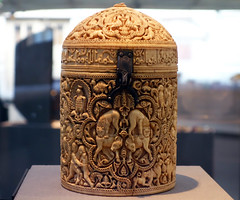
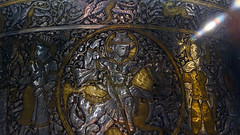

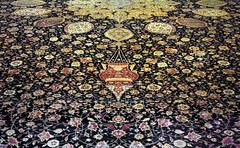


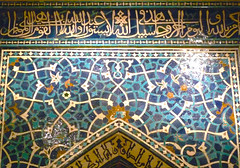
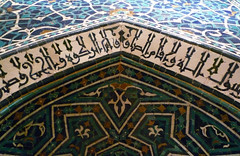
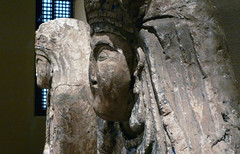

More than Smarthistory images…
Source: https://smarthistory.org/courses/islamic-art-in-10-works-of-art/
0 Response to "What Art Forms Are Traditionally Most Common in Islamic Art"
Post a Comment